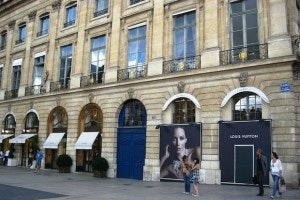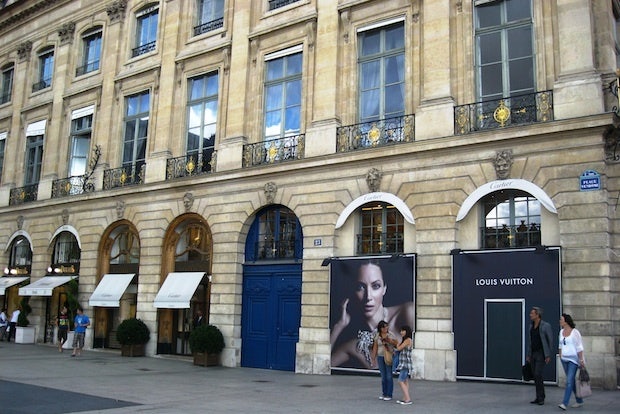Branded Jewelry Defies Growing "Logo-Lite" Demand In China's Soft Luxury Market#

Conspicuous consumption may be on the decline in China's "soft luxury" market, as some wealthy Beijingers and Shanghainese buy more "logo-lite" handbags and apparel, but major luxury brands see China as a long-term bright spot for "hard luxury" -- watches and fine jewelry in particular. As Jing Daily wrote late last year in our annual wrap-up, a series of online scandals and more government sensitivity about the word "luxury" last year caused a dip in over-the-top excess, particularly in top-tier cities, and this trend has continued in 2012 amid a broader (yet not staggering) economic slowdown. As such, we noted that "we expect the adoption of '
low-key luxury#
' to gain pace, particularly in economic and political power centers like Beijing and Shanghai." Now, with major brands putting more effort and focus on hard luxury, building dedicated watch or jewelry boutiques (and, in some cases, introducing their first lines), China may be ripe for a branded fine jewelry boom.
This trend has been particularly visible among top-tier brands in recent months. Following the likes of Gucci, Dior and Chanel, a growing number of luxury houses have moved into the branded jewelry sector, with Louis Vuitton cutting the ribbon this week on its new jewelry boutique on Place Vendôme, Versace launching its first "high jewelry" collection this past weekend, and Ferragamo introducing its own line this March. As the FT notes this week, this trend will likely continue for quite some time, as branded jewelry, or jewelry with "a stylistic signature and brand name attached to it," only makes up 19 percent of the global fine jewelry market. Compare that to branded leather goods, which comprise 50 percent of that market, or branded eyewear, which represents 38 percent. As Thomas Tochtermann of McKinsey told the FT, branded fine jewelry could take up twice as much market share by 2020.
China could prove instrumental in this growth, with its overall luxury market expected to grow anywhere from 10-20 percent in 2012, depending on estimates, and jewelry demand rising from the country's middle class. While dedicated jewelers like Tiffany & Co., Harry Winston, Van Cleef & Arpels and others are seeing less of a sales boom this year than in 2010-2011, branded jewelry appeals to a somewhat wider audience, particularly in second- and third-tier cities where brand loyalty and knowledge is relatively low. As Caroline Reyl, manager of the Premium Brands fund at Pictet, told the FT, China will be a "significant source of growth" for branded fine jewelry. According to this year's Worldwatch Report, hard luxury demand is rising quickly in China, with demand for luxury watches in China overtaking the United States for the first time. (Though China is not yet the top market for luxury watch sales.)
Major brands are placing a large bet on Asia-Pacific demand continuing to grow for branded fine jewelry, but that's not entirely surprising considering the region's importance to the global luxury market. Currently, China is Versace's fastest-growing fine jewelry market, while Asia accounts for over 40 percent of sales for Richemont, owner of brands like Piaget, Van Cleef & Arpels, and Cartier. These brands, many of which offer a full spectrum of items ranging from soft to hard luxury, expect to benefit from the newer luxury consumer in emerging markets, who may find the world of unbranded or traditional jewelry intimidating.
